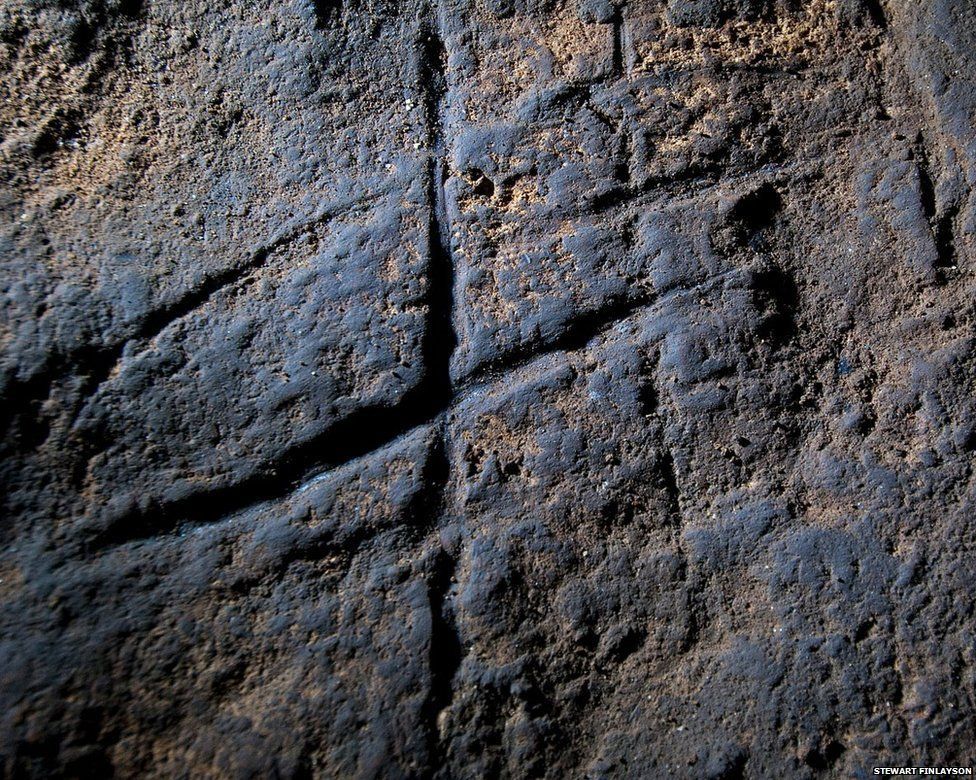Long before modern humans walked the earth, there lived in Europe another species off humans—the Neanderthals. It’s unclear exactly when Neanderthals appeared on the scene. Estimates range from 300,000 years to as far back as 800,000 years ago. Their date of extinction is also uncertain. It’s generally accepted that the Neanderthals went extinct about 40,000 years ago, but there are several isolated pockets around Europe where Neanderthals appeared to have survived for much longer. One such location is the Gorham's Cave complex. This particular location is important because it is one of the last known sites occupied by the Neanderthals in Europe.

Neanderthal family group at the entrance to a coastal cave, by Charles R. Knight (1920).
Gorham's Cave is a collection of four caves situated on the steep limestone cliffs on the sea-facing side of the Rock of Gibraltar. The entrance of the cave is approximately 35 meters high, but the deeper the cave goes it becomes narrower, until at some 60 meters depth it makes a sudden 90 degrees turn. The total length of this cave is approximately 100 meters, but it is possible that further research might make the cave longer and might bring new, amazing discoveries.
When the cave was first inhabited some 55,000 years ago, the shore was approximately 5 km away. However, after the last ice age ended and global sea level rose, the sea came nearer. Now the cave is only a few meters from the Alboran Sea.

Gorham’s cave complex. Photo: Visit Gibraltar/Flickr
The cave was first discovered by Captain A. Gorham of the 2nd Battalion Royal Munster Fusiliers in 1907. Gorham inscribed his name and the date of his discovery in lamp-black on the wall of the cave, which has borne his name ever since. After the initial discovery, the cave did not attract much attention until some forty years later when until Royal Engineers Eric Keighley and Denis Ward discovered pottery and stone tools, as well as human and animal remains and reported these findings to the governor of Gibraltar, who in turn reported it to the British Museum for their deliberation. Subsequent excavation revealed sediments 18 meters thick deposited during different periods of time. Embedded within these sediments were evidence of habitation that dates all the way back to 47,000 years ago. The most interesting era was between 32,000 to 24,0000 years when the cave was inhabited by Neanderthals.

View from Gorham's Cave. Photo: John Cummings/Wikimedia
The first remnant of Neanderthals, a skull, was discovered in 1848. At first it was thought to be a human skull until it was studied by paleontologists George Busk and Hugh Falconer in 1862. They declared that the skull belonged to a new species and proposed it be called Homo calpicus. Only later it was realized that the skull was a specimen of Homo neanderthalensis. The skull was the first Neanderthal adult cranium to be discovered and, although small, is nearly complete. In 1926, a second Neanderthal skull, that of a four-year-old child, was found at a rock shelter very close to where the first skull was discovered.
Large-scale excavations carried out between 1947 and 1954 showed that Gorham's Cave had been occupied for over 100,000 years during the Middle Palaeolithic, Upper Palaeolithic and Holocene epochs. More recent excavation carried out in 1994 revealed a Neanderthal landscape found nowhere else. Buried within many meters of sand, fallen stalactites, bat guano and other debris were priceless finds that have enabled paleontologists to reconstruct the lifestyles of the occupants and their environment in considerable detail.

These scratch marks on the wall of the cave is believed to have been made by Neanderthal.
Evidence from Gibraltar's caves shows that the Neanderthals occupied the peninsula for at least 100,000 years, but they did not stay there all year round but lived in widely dispersed groups that roamed across the open savannah and coastal wetlands following wherever the animals went. Animal remains found in the caves show that the Neanderthals were active hunters. Among large animals, their favorite was the ibex, which would have been plentiful in the vicinity of the Rock. They also hunted red deer and other grazing animals. In addition to large animals, they also ate very large quantities of small mammals such as rabbits and birds, both of which were plentiful in Gibraltar. Remains of nearly 150 different species, representing a quarter of Europe's total, were found in the caves, making them the richest sites for fossil bird remains anywhere in Europe. They also ate tortoises, monk seals, and large quantities of shellfish, probably harvesting them from the seashore and bringing them back in bags made from animal skins.
The Neanderthals were intelligent beings. They knew how to create fire, cook food, store food, weave clothes and blankets, and make use of medicinal plants to treat injuries. They disappeared between 45,000 and 42,000 years ago when the climate abruptly became extremely cold, arid and unstable. The fertile savannah was replaced by pine forests while higher ground became an arid steppe. The Neanderthal in Gibraltar could have migrated to more fertile plains in Africa but the Strait of Gibraltar prevented their movement. Nevertheless, Gibraltar's Neanderthals survived until about 24,000 years ago, and may have been the last members of their species. Eventually when modern humans arrived, increased competition with a vastly more intelligent species drove the last of the Neanderthals into extinction.












Comments
Post a Comment